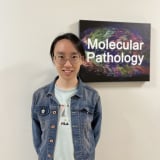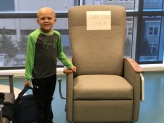Novel mechanisms and therapeutic targeting of chemoresistant rhabdomyosarcoma

Rhabdomyosarcoma (RMS) is a common and aggressive childhood cancer that arises from muscle. Current treatment includes radiation, chemotherapy, and surgery. However, 30% of patients eventually develop resistance to the drugs used to treat their tumors and their tumors reform. Sadly, nearly all patients that develop therapy resistant RMS ultimately die of their tumors. Since treatment strategies for RMS have not changed in 40 years, there is a critical need to develop new therapies to kill RMS tumors, including identifying drugs that can re-sensitize them to the same chemotherapies commonly used to treat patients. My work will identify the mechanisms by which RMS tumors develop resistance to standard chemotherapy and a newly innovated drug combination that is in clinical trials based on our lab’s work. I will also assess if an FDA-approved drug can reverse resistance, providing hope to move my work into new clinical trials in the future.
Project Goal:
My work will identify new combinations of drugs to kill chemotherapy-resistant muscle cancer. My previous work has identified a pathway called PI3K/AKT that is activated and drives drug resistance in RMS. Here, aim 1 will define how the PI3K/AKT pathway is turned on in chemotherapy-resistant tumors. Aim 2 will assess a new drug combination for the ability to kill RMS tumors that are resistant to standard chemotherapy and a newly innovated drug combination that is in clinical trials based on our lab’s work. My research will explain why certain drug combinations work better at killing RMS tumors and have a high likelihood of identifying better treatments for this type of cancer. My ultimate goal is to find medicines that can kill the chemotherapy-resistant RMS and advance my research to the next stage of treating patientsin clinic. Finally, it is possible that the same processes are used in other cancers, raising hopes that my work will also lead to new treatments for other childhood cancers.

